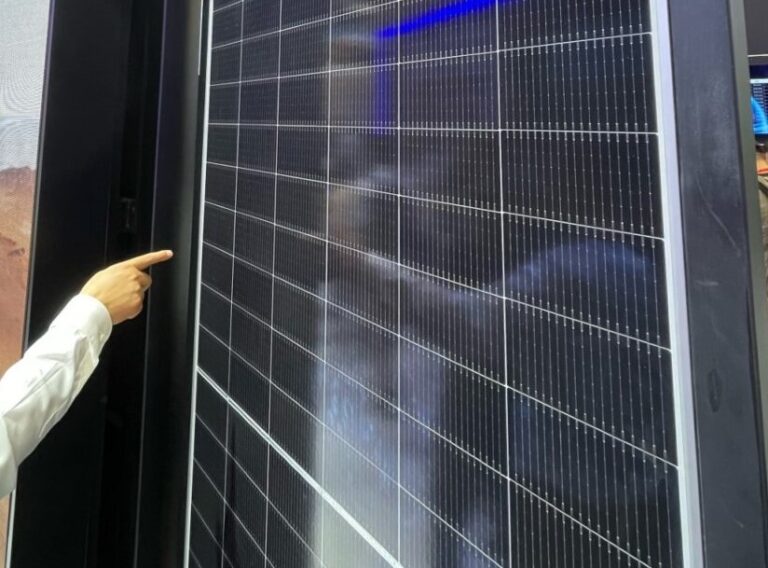In a paper published in Nature, the Chinese module maker explained that the 33.9% efficient tandem device it unveiled in December 2023 is based on a double-layer, interleaved passivation strategy that combines efficient electron extraction with further suppression of non-radiative recombination. It also revealed that its two-terminal tandem prototypes achieved an efficiency of 34.6%.
Chinese solar module manufacturer Longi has revealed that it has achieved an energy conversion efficiency of 34.6% in prototype dual-terminal tandem perovskite solar cells.
“Currently, the two-terminal tandem prototypes developed by Longi’s tandem team have been authoritatively certified with a record efficiency of 34.6%,” the manufacturer said, without giving more technical details. “The commercial-sized two-terminal tandem cells developed for mass production (M6) and the world’s first four-terminal square meter tandem modules have been authoritatively certified with efficiencies of 30.1% and 25.8% respectively. These results demonstrate a significant efficiency advantage over single-junction silicon cell technology.”
The announcement was made during the launch of a scientific study paper that describes in detail the perovskite-silicon tandem solar cell it unveiled in December 2023. This PV device achieved the highest energy conversion efficiency ever measured for this type of cell to date.
At the time, the US Department of Energy’s National Renewable Energy Laboratory (NREL) confirmed the results, which represent a world record for this cell typology. The previous record was held by Saudi Arabia’s King Abdullah University of Science and Technology (KAUST), which achieved an efficiency of 33.7% in June for a device with the same configuration.
Longi’s result is also the first reported certified efficiency exceeding the single-junction Shockley-Queisser limit of 33.7% for a dual-junction tandem solar cell.
The manufacturer’s research team explained that the cell was based on a two-layer interface passivation strategy that reportedly maximizes both electron transport and hole blocking. This is achieved by the incorporation of a thin lithium fluoride (LiF) layer and the deposition of short-chain ethylene diammonium diiodide (EDAI) molecules.
“A thicker LiF layer can help improve passivation, but comes with significant unwanted resistivity loss,” they said. “Nevertheless, the EDAI molecule can chemically passivate the unpassivated regions that do not contact the LiF layer, forming localized nanoscale contacts at the perovskite/C60 interface, which can provide an optimal trade-off between passivation and charge extraction .”
The researchers said they were able to achieve “better” structural coupling between the perovskite top cell and the crystalline silicon bottom cell using a patented technology for silicon heterojunction solar cells with an asymmetrically structured surface. “The front surface of this silicon cell has a finely structured surface, which facilitates the solution-based preparation of perovskite film, while the back surface of the silicon cell uses a standard large structured surface to achieve better passivation and infrared spectral response,” they added.
Thanks to the LiF/EDAI, the bilayer was responsible for increasing the open-circuit voltage and the fill factor of the device, which reached values of 1.97 V and 83.0%, respectively, as it suppressed interfacial recombination in combination with a more efficient charge extraction at the electron transport layer (ETL) interface.
Longi said his research work has received strong support from Suzhou University, Huaneng Clean Energy Research Institute and Hong Kong Polytechnic University (HKPU). It was presented in the study “Perovskite-silicon tandem solar cells with bilayer interface passivation”, published in nature.
This content is copyrighted and may not be reused. If you would like to collaborate with us and reuse some of our content, please contact: editors@pv-magazine.com.


